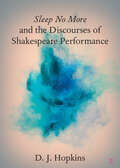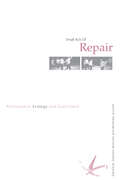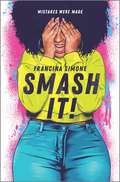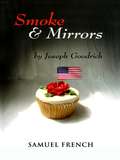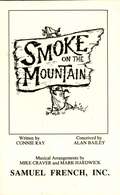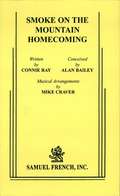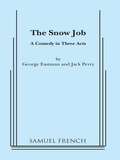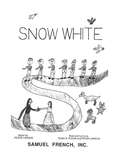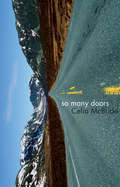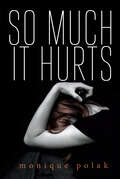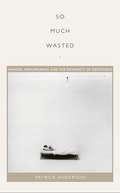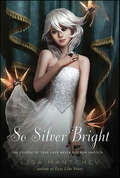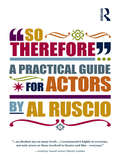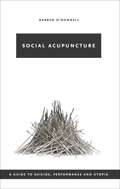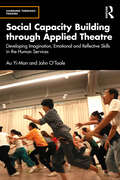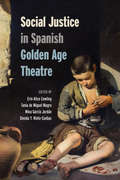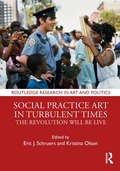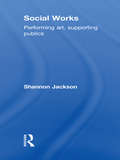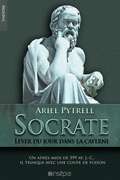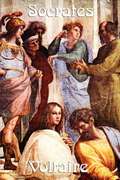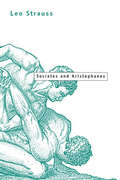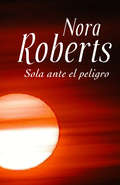- Table View
- List View
Sleep No More and the Discourses of Shakespeare Performance (Elements in Shakespeare Performance)
by D. J. HopkinsThis Element focuses on Sleep No More, theatre adaptation of Macbeth produced by the British company Punchdrunk. This Element frames the Shakespeare adaptation as part of a system of ghostly citationality through which audiences understand the significance of the past in performances today. Hopkins introduces the concept of “uncanny spectatorship” to describe audience practice in Sleep No More and other performance contexts. The Element positions experiences like Sleep No More as forms of critical inquiry, and, despite its seemingly analog format, Sleep No More is discussed as a valuable site for media research. Ultimately, Sleep No More and the Discourses of Shakespeare Performance Sleep No More offers an opportunity to explore a set of concepts that are significant to the subject of Shakespeare Performance and to consider the ways in which audiences interact with bodies, spaces, text, and media.
Small Acts of Repair: Performance, Ecology and Goat Island
by Stephen Bottoms Matthew GoulishGoat Island are one of the world’s leading contemporary performance ensembles. Their intimate, low-tech, intensely physical performances represent a unique hybrid of strategies and techniques drawn from live art, experimental theatre and postmodern dance. Small Acts of Repair: Performance, Ecology and Goat Island, is the first book to document and critique the company’s performances, processes, politics, aesthetics, and philosophies. It reflects on the company’s work through the critical lens of ecology – an emerging and urgent concern in performance studies and elsewhere. This collage text combines and juxtaposes writing by company members and arts commentators, to look in detail at Goat Island’s distinctive collaborative processes and the reception of their work in performance. The book includes a section of practical workshop exercises and thoughts on teaching drawn from the company’s extensive experience, providing an invaluable classroom resource. By documenting the creative processes of this extraordinary company, this book will make an important contribution to the critical debates surrounding contemporary performance practices. In so doing, it pays compelling tribute to committed art-making, creativity, collaboration, and the nature of the possible.
Smash It!
by Francina SimoneRefreshingly authentic and bold… Don’t miss this smashing #ownvoices novel from Francina Simone, filled with heart, humor and a heroine to root for!Olivia “Liv” James is done with letting her insecurities get the best of her. So she does what any self-respecting hot mess of a girl who wants to SMASH junior year does…After Liv shows up to a Halloween party in khaki shorts—why, God, why?—she decides to set aside her wack AF ways. She makes a list—a F*ck-It list.1. Be bold—do the thing that scares me. 2. Learn to take a compliment.3. Stand out instead of back.She kicks it off by trying out for the school musical, saying yes to a date and making new friends. Life is great when you stop punking yourself! However, with change comes a lot of missteps, and being bold means following her heart. So what happens when Liv’s heart is interested in three different guys—and two of them are her best friends? What is she supposed to do when she gets dumped by a guy she’s not even dating? How does one Smash It! after the humiliation of being friend-zoned? In Liv’s own words, “F*ck it. What’s the worst that can happen?” A lot, apparently.#SMASHIT
Smoke And Mirrors
by Will OsborneFull Length, Mystery Comedy \ 4m, 1f \ Int. \ This rivetting mystery comedy will keep audiences guessing as they go on location to an isolated island off the Gulf coast to watch power hungry producer/director Hamilton Orr lure his timid screenwriter Clark into a scheme to get rid of the insufferable star of their multi-million dollar film. The plot hinges on the rehearsal of a suicide scene and the only witness to the murder is Hamilton's wife Barbara, the film's quirky publicist and Clark's former lover. The wily, eccentric sheriff unearths one surprise after another until the final stunning revelation. \ "A good mystery ... [with] funny dialogue, well crafted characters. If Agatha Christie and Noel Coward had collaborated on Robert Altman's 'The Player', they might have come up with something like this." Palm Beach Post.
Smoke On The Mountain
by Mike Craver Constance Ray Mark HardwickMusical / 4m, 3f / Interior / The year is 1938. It's Saturday night in Mount Pleasant, NC, and the Reverend Oglethorpe has invited the Sanders Family Singers to provide an upliftin' evening of singin' and witnessin'. The audience is invited to pull up a pew and join in the rollicking good time. More than two dozen songs, many of them vintage pop hymns, and hilarious stories from the more or less devout Sanders provide a richly entertaining evening that has audiences clapping, singing, laughing and cheering.
Smoke On The Mountain Homecoming
by Mike Craver Alan Bailey Connie RayMusical / 4m, 3f / Unit Set / It's October, 1945, and the gospel-singing Sanders Family is back together again. The war is over and America's years of prosperity are just beginning. But there's another kind of rite of passage at Mount Pleasant Baptist Church, where Reverent Mervin Oglethorpe is giving his last service. He's been called to preach in Texas, and he's already bought a ten-gallon hat and is preparing to ride into the sunset with his wife June, who is eight months pregnant. Tomorrow morning, young Dennis Sanders takes over as Mount Pleasant's pastor. Join the Sanders Family as they send Mervin and June off in style, with hilarious and touching stories and twenty-five toe-tapping Bluegrass Gospel favorites.
Snow Job
by George EastmanComedy / 10m, 4f / Interior / A copywriter is being sent to Montana in the dead of winter. He decides to grab a weekend with his wife at their yet unfinished chalet in New Hampshire first. Beginning with his next door neighbor who chooses this weekend for a skiing trip and a stop in visit that never stops and adding assorted uninvited guests, the weekend snowballs with frustrating confrontations. A houseful of people and no place to put them, a raging snowstorm, no hot water and a snow bunny who is after the host are enough to ruin any weekend.
Snow White (Larson/Kude)
by Edna KuderThis enchanting version of the classic story is designed to teach children the joy of being on stage. It is perfect to be performed by and for elementary school children. The text is easy to learn and the melodic songs by an award-winning composer employ a simple piano accompaniment. Cast size can vary from 17 to 50, and the settings can be simple or elaborate. Running time is approximately 30 minutes.
So Many Doors
by Celia McbrideIn a support group for bereaved parents, Shayla, Lyle, Linee, and Jed each fight their personal demons in the search for life after the death of one's child. Set in the vast and remote landscape of Whitehorse, Yukon, playwright Celia McBride plunges into these characters' painful struggle to find a voice for their grief.
So Much It Hurts (Young Adult Novels)
by Monique PolakIris is an aspiring actress, so when Mick, a well-known visiting Aussie director, takes an interest in her, she's flattered. He's fourteen years older, attractive, smart, charming and sexy—in other words, nothing like her hapless ex-boyfriend, Tommy. But when Iris and Mick start a secret relationship, she soon witnesses Mick's darker side, and his temper frightens her. Before long, she becomes the target of his rage, but she makes endless excuses for him. Isolated and often in pain, Iris struggles to continue going to school, where she is preparing for her role as Ophelia. When her family and friends begin to realize that something is terribly wrong, Iris defends her man, but she also takes the first tentative steps toward self-preservation.
So Much Wasted: Hunger, Performance, and the Morbidity of Resistance
by Patrick AndersonIn So Much Wasted, Patrick Anderson analyzes self-starvation as a significant mode of staging political arguments across the institutional domains of the clinic, the gallery, and the prison. Homing in on those who starve themselves for various reasons and the cultural and political contexts in which they do so, he examines the diagnostic history of anorexia nervosa, fasts staged by artists including Ana Mendieta and Marina Abramović, and a hunger strike initiated by Turkish prisoners. Anderson explores what it means for the clinic, the gallery, and the prison when one performs a refusal to consume as a strategy of negation or resistance, and the ways that self-starvation, as a project of refusal aimed, however unconsciously, toward death, produces violence, suffering, disappearance, and loss differently from other practices. Drawing on the work of Martin Heidegger, Sigmund Freud, Giorgio Agamben, Peggy Phelan, and others, he considers how the subject of self-starvation is refigured in relation to larger institutional and ideological drives, including those of the state. The ontological significance of performance as disappearance constitutes what Anderson calls the "politics of morbidity," the embodied, interventional embrace of mortality and disappearance not as destructive, but rather as radically productive stagings of subject formations in which subjectivity and objecthood, presence and absence, and life and death are intertwined.
So Silver Bright (Theatre Illuminata)
by Lisa MantchevAll Beatrice Shakespeare Smith has ever wanted is a true family of her own. And she's close to reuniting her parents when her father disappears. Now Bertie must deal with a vengeful sea goddess and a mysterious queen as she tries to keep her family – and the Theatre Illuminata – from crumbling. To complicate it all, Bertie is torn between her two loves, Ariel and Nate.
So Therefore...: A Practical Guide For Actors
by Al Ruscio‘Every scene or action or speech has a so therefore. It is the goal, the ultimate statement of the character. You should know the so therefore as you begin your scene ... The climax and the payoff is the so therefore.’ – from Al Ruscio’s Preface When working through a scene with a student, renowned actor and acting teacher Al Ruscio will ask, ‘so therefore, what?’ to urge them to capture the specific actions and desires that define their character at that moment. So Therefore… interweaves tried-and-tested practical exercises with sound advice, and illustrative tales from Ruscio’s remarkable career, to form a training handbook as uniquely pragmatic as his favourite phrase. Breaking down his method into three broad focuses, Ruscio considers: Warming Up – including relaxation, going ‘beneath the words’ and emotional recall; Scene Work – ranging from character analysis to an exploration of action; The Play – discovering its spine, progressing through rehearsals and sustaining a performance. But So Therefore… also reflects wisely on such diverse subjects as Stage versus Film, and Stamina, Luck and Chutzpah. Enriching and generous, it is the culmination of a career that has taken in dozens of major motion pictures, and spans the entire history of television – as well as half a century spent training actors. Al Ruscio graduated from the famed Neighborhood Playhouse School of the Theatre and has been teaching acting for five decades. He has served on the Board of Directors of the Screen Actors Guild and is a current voting member of the Academy of Motion Picture Arts and Sciences.
Sobre el poder (Serie Great Ideas #Volumen 7)
by William ShakespeareIdeas que han cambiado el mundo. A lo largo de la historia, algunos libros han cambiado el mundo. Han transformado la manera en que nos vemos a nosotros mismos y a los demás. Han inspirado el debate, la discordia, la guerra y la revolución. Han iluminado, indignado, provocado y consolado. Han enriquecido vidas, y también las han destruido. Taurus publica las obras de los grandes pensadores, pioneros, radicales y visionarios cuyas ideas sacudieron la civilización y nos impulsaron a ser quienes somos. Éstos son los mejores escritos de Shakespeare sobre el poder en todas sus formas: en el amor, en la guerra, en la política y en la familia. De las desmesuradas ambiciones de Macbeth al frágil control de la autoridad de Ricardo II, de las violentas rivalidades del rey Lear a la exquisita poesía de sus sonetos de amor, estos textos muestran, con sutileza filosófica y agudeza psicológica, cómo los hombres se manipulan y dominan mutuamente. Comentarios sobre la colección Great Ideas: «De veras que la edición es primorosa y pocas veces contenido y continente pueden encontrarse mejor ensamblados y unidos. ¡Qué portadas! Para enmarcar. [...] Ante las Great Ideas, solo cabe quitarse el sombrero. ¡Chapeau!»ABC «Taurus propone un doble envite con este lanzamiento. Por un lado aumenta su compromiso con el ensayo; por otro, recupera el gusto por la estética. A los volúmenes se les ha proporcionado una portada delicada y cuidada (copian el original británico) que invita a la lectura.»La Razón «Un fenómeno editorial.»The Guardian «Aparte de los contenidos, en general muy bien elegidos, son tan bonitos que si los ven seguro que cae alguno.»El País «Ideas revolucionarias, crónicas de exploraciones, pensamientos radicales... vuelven a la vida en estas cuidadísimas ediciones, muy atractivas para nuevos lectores.»Mujer Hoy «Grandes ideas bien envueltas. De Cicerón a Darwin, esta colección entra por los ojos.»Rolling Stone «Original y bella iniciativa la emprendida por Taurus con su colección Great Ideas.»Cambio 16 «Hay libros inmortales, libros únicos que contienen pensamientos y reflexiones capaces de cambiar el mundo, tesoros en miniatura reagrupados en la colección Great ideas.»Diario de León
Social Acupuncture: A Guide To Suicide, Performance And Utopia
by Darren O'DonnellTheatre doesn't have much relevance anymore. Or so acclaimed playwright Darren O'Donnell tells us. The dynamics of unplanned social interaction, he says, are far more compelling than any play he could produce.
Social Capacity Building through Applied Theatre: Developing Imagination, Emotional and Reflective Skills in the Human Services (Learning Through Theatre)
by John O'Toole Au Yi-ManAs experts in both applied theatre and education, Au Yi-Man and John O’Toole outline how applied theatre techniques can be used to support workers in the human services to develop crucial skills such as resilience, imagination, critical thinking, and reflection.Highlighting under-emphasised skills and qualities in the human services professions, this book combines theory with context-specific practice to support capacity building across sectors. Drawing on a detailed study of NGO workers learning to use applied theatre techniques in professional development, the book offers insight into the learning and experiences of the participants and how these can be applied to future training programs. The book also provides a deeper understanding of how adult learners, from different backgrounds and levels of experience, approach their professional training. Rich with resources, the book features complete course examples, including theatre of the oppressed, process drama, and educational theatre, as core drama techniques.Opening up new opportunities for applied theatre practitioners and educators, this book is a must-read for teachers in any human services field intending to use drama or applied theatre in their training.
Social Dramas: Literature and Language in Early-Modern England.
by David A. PostlesHow the repeated social tropes and paradigms of the City comedies give us an in-depth look into everyday London society in the early 17th-century.Although literature is often assumed to belong to the sphere of representation rather than constituting an accurate reflection of social reality, early-modern English drama can tell us much about social attitudes in the early seventeenth century. The City comedies were, in particular, composed by authors who were embedded in the mundane social existence of London, in its quotidian transactions and exchanges, in its less salubrious contexts of debt, drinking, death and incarceration. To elucidate the complex social attitudes of the City urban elite, five particular themes are explored: the symbolism of attire; matrimonial talk; the use of money (coin) as metaphor and metonymy; “over-exuberance” towards the opportunity of the “New World”; and continuing differences of speech and customary language use. Although the dramatists had slightly differing allegiances, their commentaries all illuminate “middling” society in the City of London.“This new work by David Postles raises important questions in an innovative manner. It will certainly be welcomed by the historical community.” —Bernard Capp, FBA, Dept of History, University of Warwick“David Postles is one of the most innovative social historians writing today.” —Nigel Goose, Professor of Social and Economic History, University of Hertfordshire“This book will be significant reading for all those working in the field. It will be warmly received by readers and reviewers, and will remain a work of reference for scholars and students for the future.” —Greg Walker, Regius Professor of Rhetoric and English Literature, University of Edinburgh
Social Justice in Spanish Golden Age Theatre (Toronto Iberic)
by Erin Alice Cowling Tania De Miguel Magro Mina García Jordán Glenda Y. Nieto-CuebasThis collection of original new essays focuses on the many ways in which early modern Spanish plays engaged their audiences in a dialogue about abuse, injustice, and inequality. Far from the traditional monolithic view of theatrical works as tools for expanding ideology, these essays each recognize the power of theatre in reflecting on issues related to social justice. The first section of the book focuses on textual analysis, taking into account legal, feminist, and collective bargaining theory. The second section explores issues surrounding theatricality, performativity, and intellectual property laws through an analysis of contemporary adaptations. The final section reflects on social justice from the practitioners’ point of view, including actors and directors. Social Justice in Spanish Golden Age Theatre reveals how adaptations of classical theatre portray social justice and how throughout history the writing and staging of comedias has been at the service of a wide range of political agendas.
Social Practice Art in Turbulent Times: The Revolution Will Be Live (Routledge Research in Art and Politics)
by Eric J. Schruers Kristina OlsonThis volume is an anthology of current groundbreaking research on social practice art. Contributing scholars provide a variety of assessments of recent projects as well as earlier precedents, define approaches to art production, and provide crucial political context. The topics and art projects covered, many of which the authors have experienced firsthand, represent the work of innovative artists whose creative practice is utilized to engage audience members as active participants in effecting social and political change. Chapters are divided into four parts that cover history, specific examples, global perspectives, and critical analysis.
Social Works: Performing Art, Supporting Publics
by Shannon Jackson‘a game-changer, a must-read for scholars, students and artists alike’ – Tom Finkelpearl At a time when art world critics and curators heavily debate the social, and when community organizers and civic activists are reconsidering the role of aesthetics in social reform, this book makes explicit some of the contradictions and competing stakes of contemporary experimental art-making. Social Works is an interdisciplinary approach to the forms, goals and histories of innovative social practice in both contemporary performance and visual art. Shannon Jackson uses a range of case studies and contemporary methodologies to mediate between the fields of visual and performance studies. The result is a brilliant analysis that not only incorporates current political and aesthetic discourses but also provides a practical understanding of social practice.
Socrate. Lever du jour dans la caverne
by Antony Gautier Morales Ariel Pytrell"Dans Socrate. Lever du jour dans la caverne, Ariel Pytrell adapte plusieurs épisodes clés de la vie d'un des philosophes les plus remarquables de la civilisation grecque. Grâce à un jeu méta théâtral brillant, parsemé de moments d'intrigue, de tendresse, de conflit, d'humour, de tragédie et de dialogues poétiques, Pytrell réussit à recréer effectivement un personnage historique, en chair et en os, pour un public moderne. Il nous invite à célébrer la vie de cette grande figure, mais dans ce cas nous trinquons avec une coupe sinistre. Avec chaque goutte que nous savourons, une scène de plus se déroule dans cette œuvre, à la fois énigmatique, magique et perspicace, dont la structure caléidoscopique continue de tourner jusqu'au lever du jour ; c'est-à-dire jusqu'à ce que nous voyions la lumière et découvrions la vérité." Susan P. Berardini | Ph. D Associate Professor of Spanish, Pace University, NY -------------------------------- "Même dans sa cellule, seul avec lui-même dans ces moments extrêmes, Socrate n'a jamais cessé sa recherche de la quintessence de la vie. Deux mille cinq cents ans après, comme s'il était un disciple contemporain du grand philosophe, l'amoureux de la Grèce antique et dramaturge argentin Ariel Pytrell, dans cette merveilleuse œuvre « Socrate. Lever du jour dans la caverne », assuma la responsabilité de transmettre l'atmosphère des derniers moments de la vie du philosophe..." Eleni Leivaditou de Bulgari | Ambassadrice de Grèce en Argentine
Socrates
by VoltaireSocrates is a play in three acts about Socrates and the events of his trial and eventual death. Satirical in nature it takes aim at government authority and organized religion. Voltaire's contempt for government and religion come through clearly in this play. Wilder Publications is a green publisher. All of our books are printed to order. This reduces waste and helps us keep prices low while greatly reducing our impact on the environment.
Socrates and Aristophanes
by Leo StraussIn one of his last books, Socrates and Aristophanes, Leo Strauss's examines the confrontation between Socrates and Aristophanes in Aristophanes' comedies. Looking at eleven plays, Strauss shows that this confrontation is essentially one between poetry and philosophy, and that poetry emerges as an autonomous wisdom capable of rivaling philosophy. "Strauss gives us an impressive addition to his life's work—the recovery of the Great Tradition in political philosophy. The problem the book proposes centers formally upon Socrates. As is typical of Strauss, he raises profound issues with great courage. . . . [He addresses] a problem that has been inherent in Western life ever since [Socrates'] execution: the tension between reason and religion. . . . Thus, we come to Aristophanes, the great comic poet, and his attack on Socrates in the play The Clouds. . . [Strauss] translates it into the basic problem of the relation between poetry and philosophy, and resolves this by an analysis of the function of comedy in the life of the city." —Stanley Parry, National Review
Sola ante el peligro
by Nora RobertsDe la autora número 1 en ventas del New York Times llega su última gran novela, la historia de una mujer que camina sin miedo por el filo del peligro... pero que debe reunir todo su coraje para permitir que el amor llame de nuevo a su puerta.A sus treinta y dos años, Phoebe MacNamara es la negociadora jefe del departamento de policía de la ciudad sureña de Savannah. Cada día arriesga su vida para salvar la de otros empleando únicamente sus hábiles dotes de persuasión. Es un trabajo que la absorbe por entero, para el que sabe que ha nacido. Fuera de él solo queda espacio para un estrecho círculo: su madre, su hermano, su avispada y precoz hija de siete años, y unos leales amigos. Un universo pequeño, que la exaspera a veces pero sin el cual no podría vivir, al que ahora querría entrar DuncanSwift. Desde que la vio salvar a un hombre dispuesto a suicidarse, Duncan se ha sentido intrigado y atraído por la mezcla de firmeza y sensibilidad que emana de Phoebe. Por eso pone en juego todo su encanto y simpatía para acercarse a ella, derribar poco a poco los muros que ha levantado a su alrededor y demostrarle que estará a su lado cuando el peligro se cierna, implacablemente, sobre la joven.
